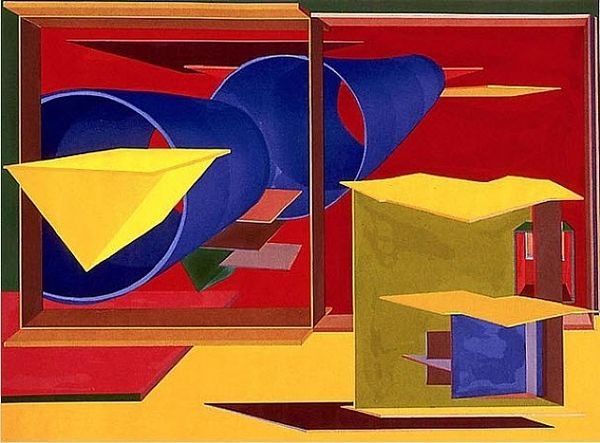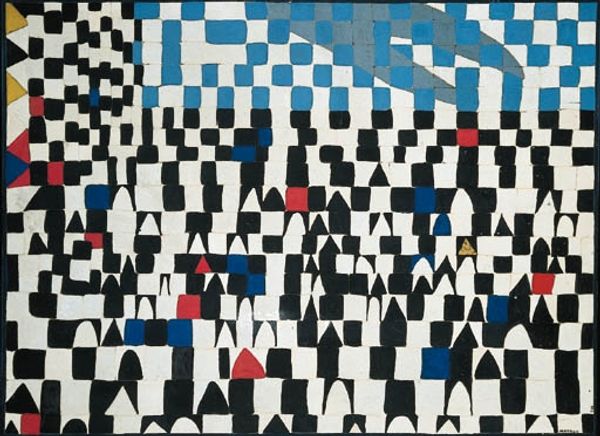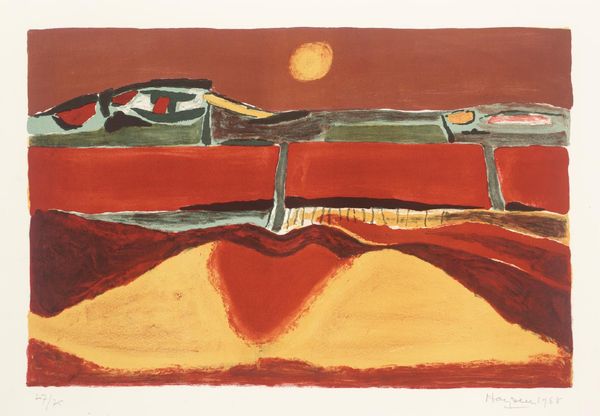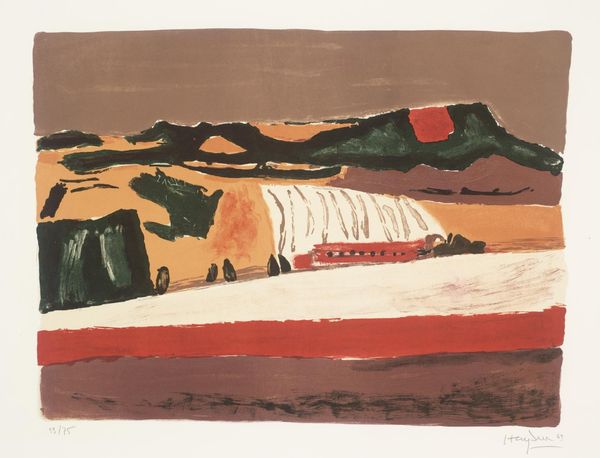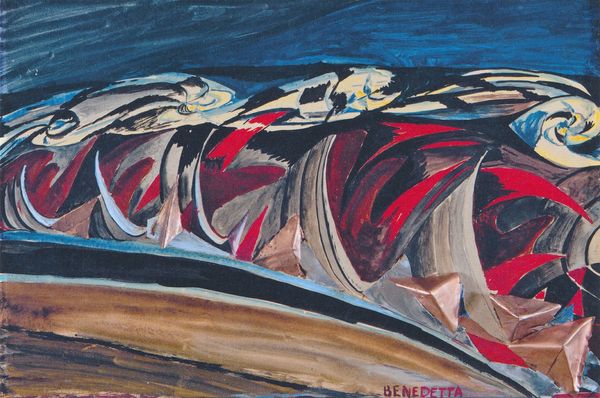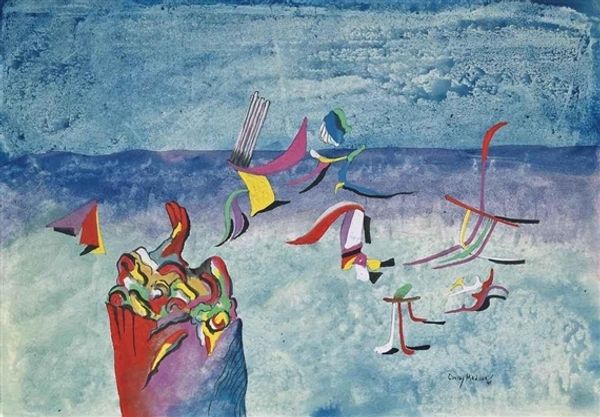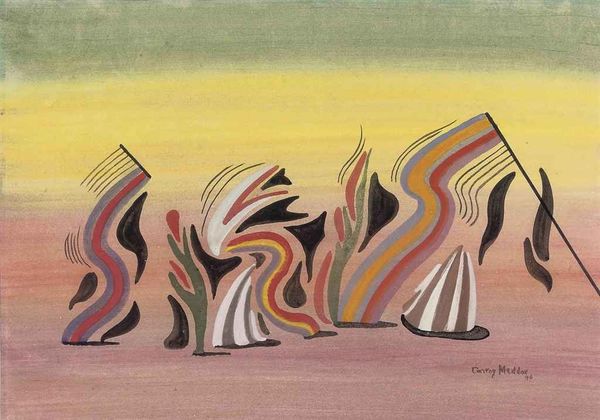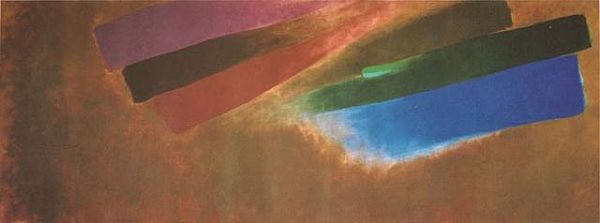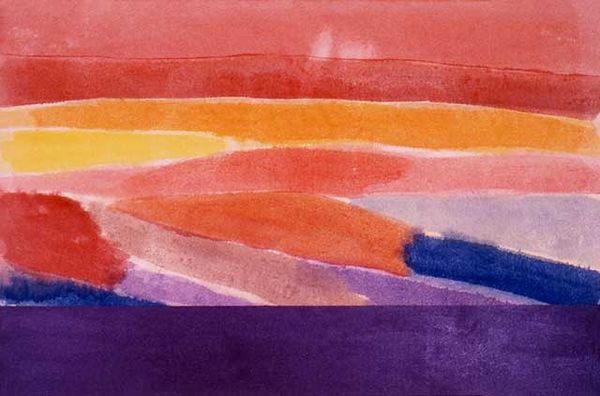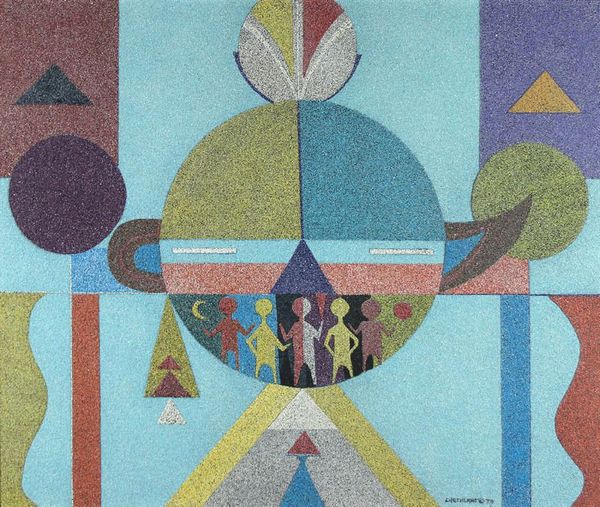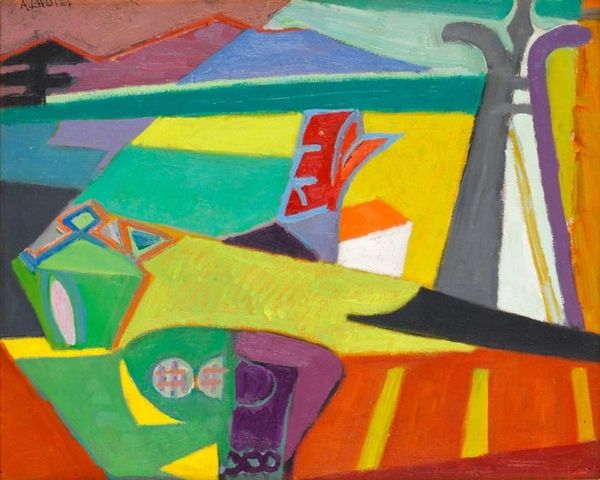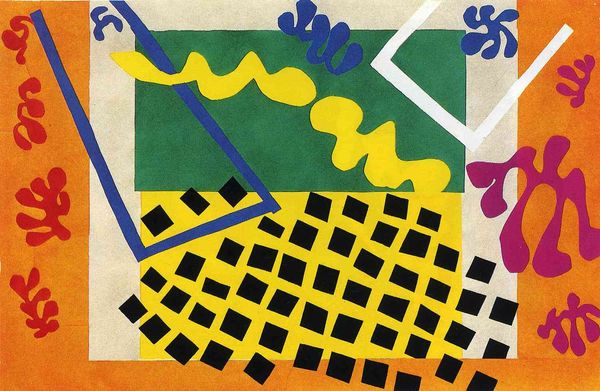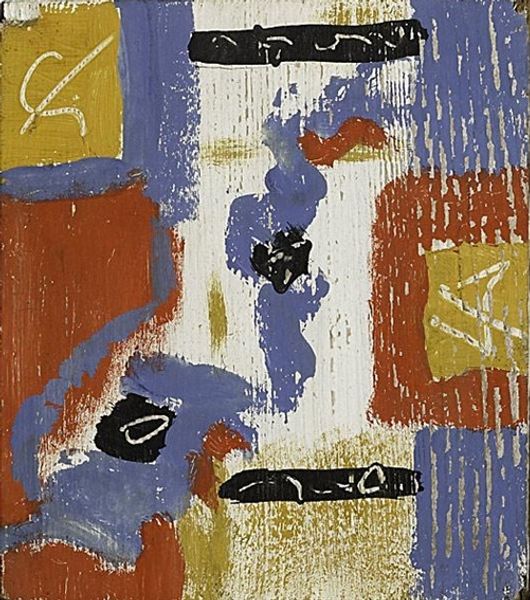
painting, oil-paint
#
painting
#
oil-paint
#
landscape
#
figuration
#
oil painting
#
geometric
#
suprematism
Copyright: Public domain
Editor: Here we have Kazimir Malevich's "Red Cavalry," an oil painting from 1932 now residing in the Russian Museum in Saint Petersburg. What strikes you first? Curator: The horizontal composition, most prominently, is partitioned into bands of color. It reads as landscape, albeit in a highly abstracted mode. The upper band is a gradation from a vibrant blue to a near white, suggestive of sky and horizon, with the geometric application of color blocks suggesting a ploughed landscape below. Editor: Right. My eye immediately goes to those thin, regimented red figures at the horizon line, they appear almost printed on. Considering the period in which it was created, and its theme, could the figures be stand-ins for the collectivization of labour? I'm also drawn to the way the landscape below the "Red Cavalry" itself resembles layers of compressed earth. Curator: Absolutely. And note how Malevich subtly plays with perspective and scale, creating a visual tension between the implied depth of the landscape and the flat application of paint, pushing and pulling the viewer's eye. The color selection also speaks volumes. The stark contrasts of red, black, and green—the layering in an almost stratified order– creates a sense of unease, reflecting, perhaps, the turmoil of the Soviet era. Editor: The materiality contributes heavily to that feeling of unease. I mean, those impasto ridges and visible brushstrokes almost suggest manual labour – the land brutally formed by people and tools. We might reflect upon Malevich's own complex relationship to the revolutionary era in Russian history, which both influenced and ultimately repressed many artists. Curator: Precisely. He returned, ultimately, from pure abstraction towards figuration during the early Stalinist period, thus "Red Cavalry," if seen in such a biographical light, can also be interpreted as a concession, a return to representation while still clinging to suprematist abstraction as an act of personal agency and creative resistance. Editor: This piece becomes ever richer with that reading. The painting embodies tensions on formal, historical, and even material levels. Thank you for those astute observations. Curator: Thank you. Considering all this, I will be giving it further thought, too.
Comments
No comments
Be the first to comment and join the conversation on the ultimate creative platform.
